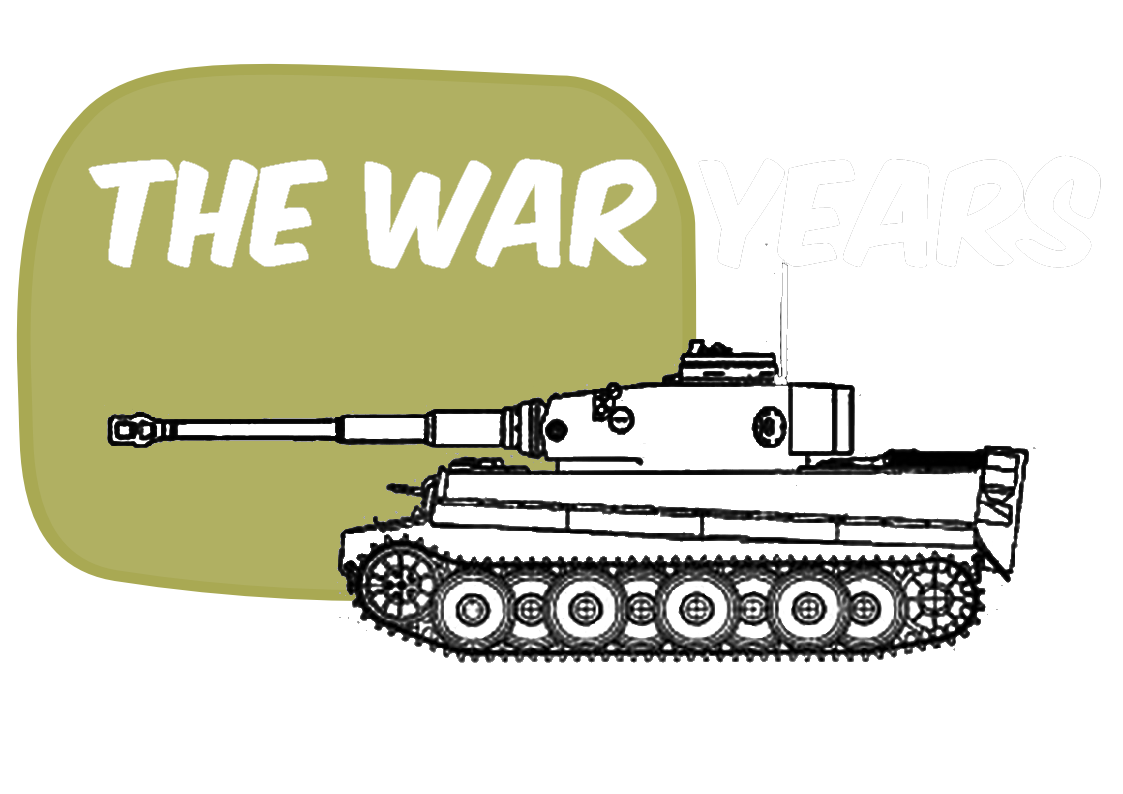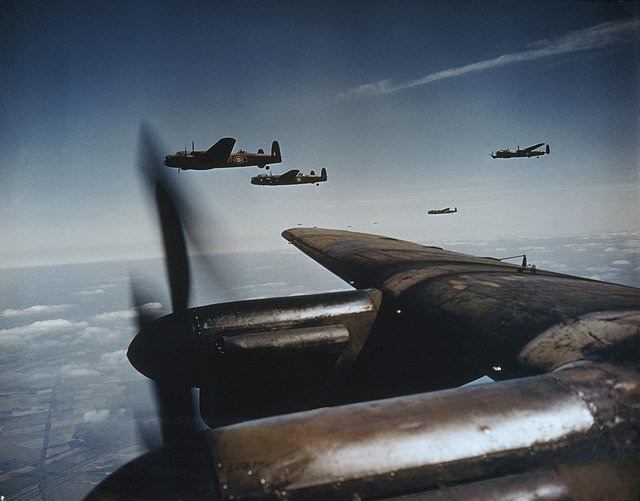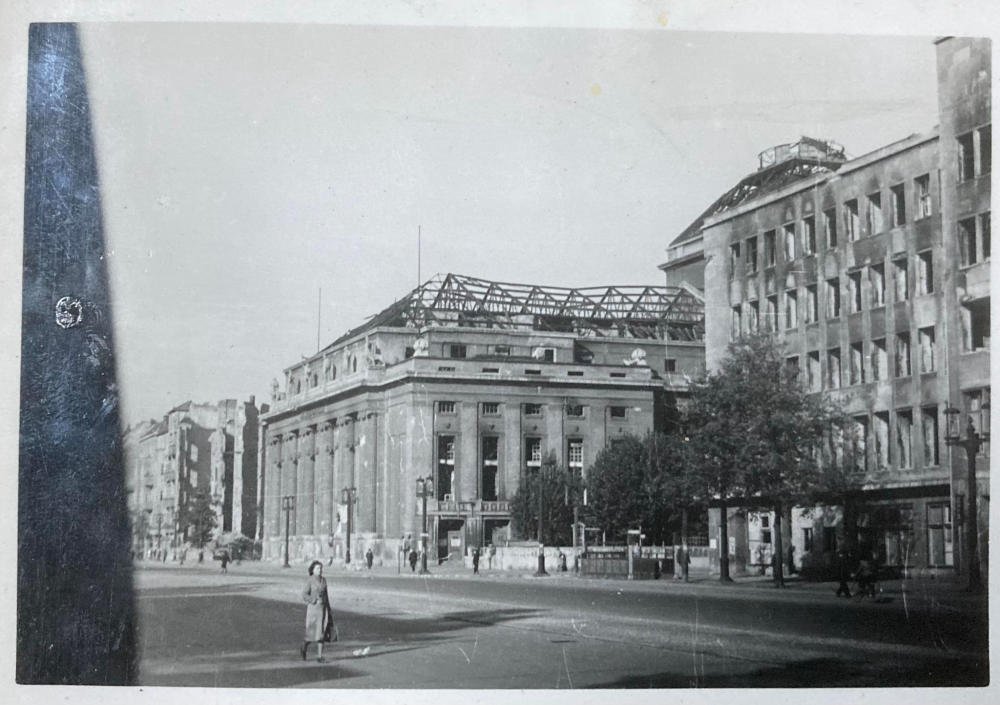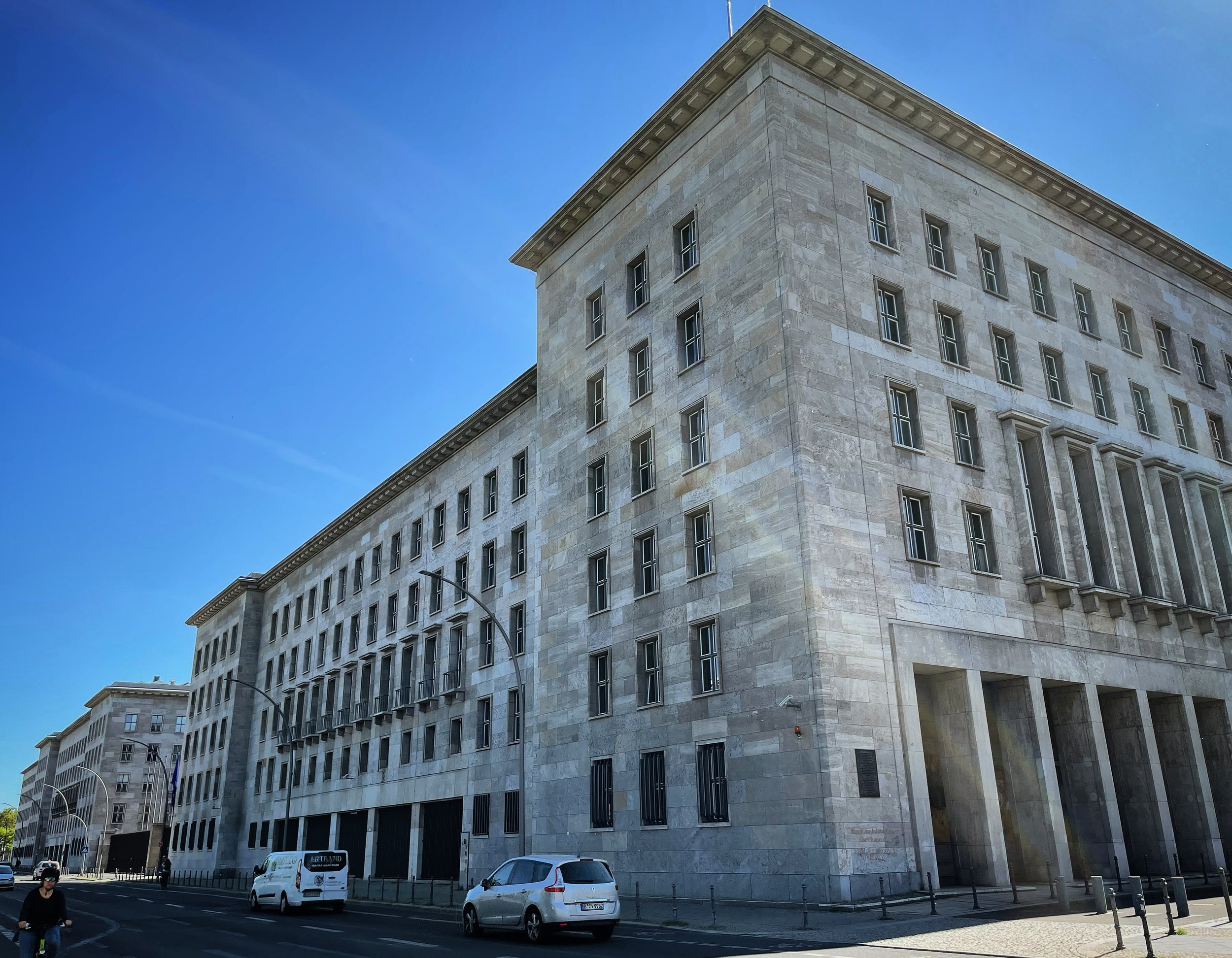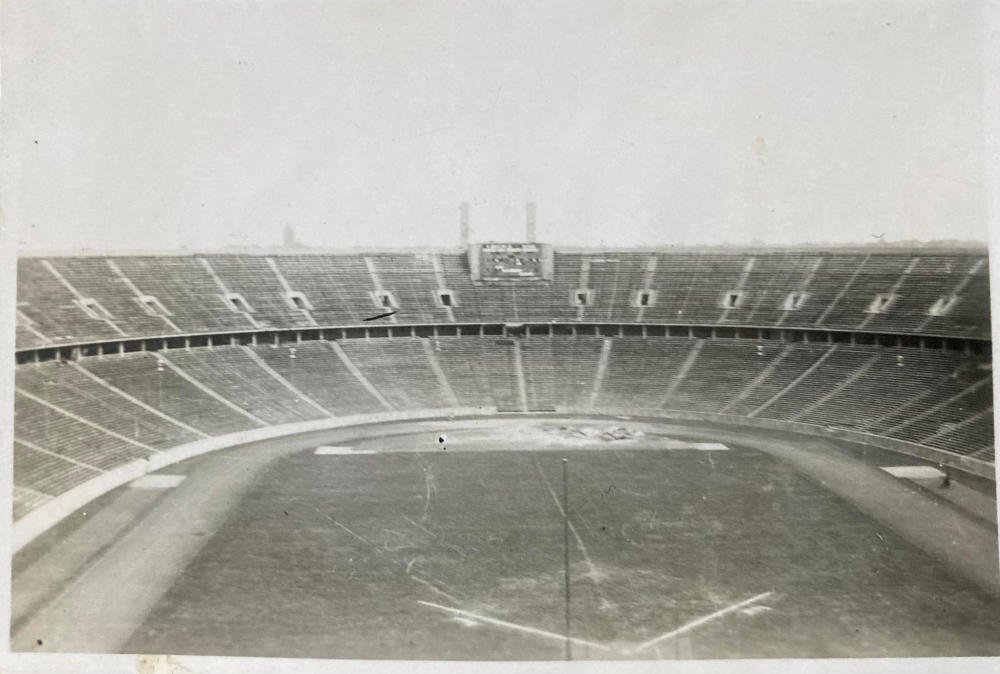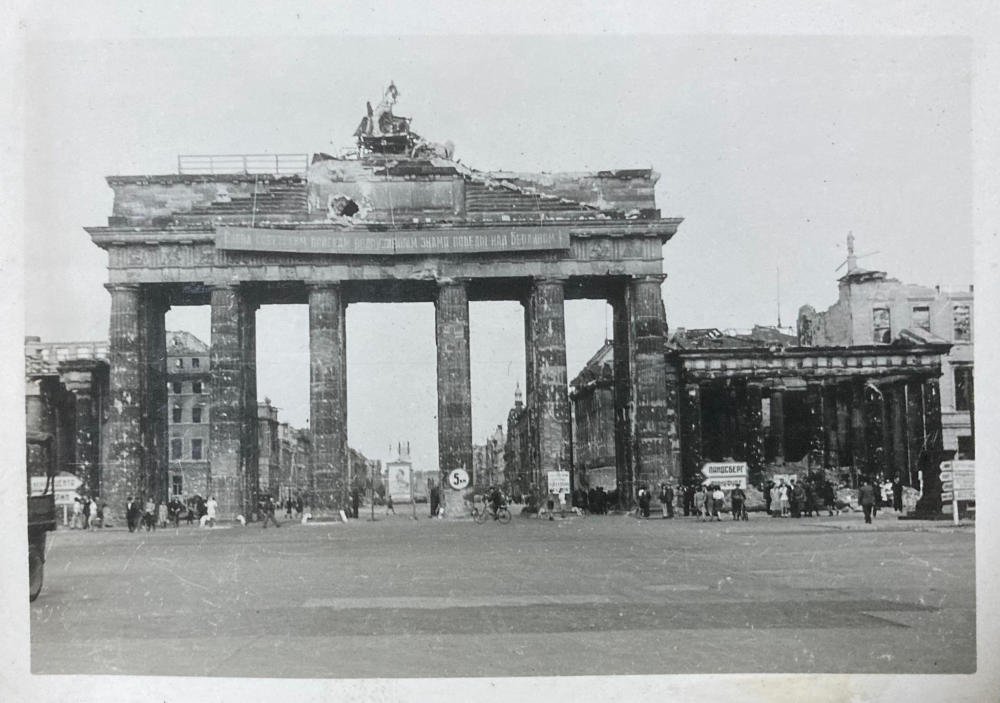
Blog
The Second World War resulted in the deaths of around 85 million people. Additionally, tens of millions more people were displaced. However, amid all the carnage, people demonstrated remarkable courage, fortitude, compassion, mercy and sacrifice. We want to honour and celebrate all of those people. In the War Years Blog, we examine the extraordinary experiences of individual service personnel. We also review military history books, events, and museums. We also look at the history of unique World War II artefacts, medals, and anything else of interest.
From Battlefields to Boardrooms: How World War II Tactics Can Revolutionise Your Business Strategy
In our latest article, we delve into the contrasting tactics used by the British and German armies during WWII and extract practical advice for today’s business leaders. Discover how the British Army’s centralised command structure often led to slower response times and missed opportunities, and learn how you can avoid these pitfalls in your own organisation.
A Light Tank Mk.VIA of the 3rd King's Own Hussars. By British Army photographer. - This photograph ARMY TRAINING comes from the collections of the Imperial War Museums (collection no. 4700-101), Public Domain, https://commons.wikimedia.org/w/index.php?curid=2113928
In the high-stakes arena of modern business, leaders are constantly seeking innovative ways to stay ahead of the competition. Surprisingly, some of the most valuable lessons in organisational agility and decision-making can be drawn from an unexpected source: Second World War military tactics. In this article, we will briefly explore the contrasting tactics used by the British and German armies in WWII and provide some practical advice for today's business leaders.
The British Approach: Centralised Command and Its Pitfalls
During World War II, the British and German armies employed starkly different tactical approaches, which had significant impacts on their battlefield effectiveness. The British Army, particularly its infantry, often found itself at a disadvantage due to its rigid command structure. This system was characterised by centralised decision-making, strict adherence to hierarchy, and limited autonomy for lower-ranking officers and soldiers.
As a result, British units frequently had to await orders from higher up the chain of command before adapting to new situations. This led to slower response times, missed opportunities, and loss of initiative on the battlefield. The inflexibility of the British system often left them struggling to keep pace with rapidly changing circumstances.
The German Strategy: Auftragstaktik and Decentralised Decision-Making
In contrast, the German army embraced a philosophy known as “Auftragstaktik” or mission-type tactics. Decentralised decision-making and empowerment of junior officers and non-commissioned officers marked this approach. It allowed for greater flexibility to adapt to changing battlefield conditions.
The German approach fostered initiative and adaptability at all levels, enabling their forces to react quickly to evolving threats and exploit unexpected weaknesses. This agility gave them a significant advantage in maintaining a high level of operational tempo and seizing opportunities as they arose.
StuG´s of the SS-Kampfgruppe “Harzer” of the 9th SS-Panzer-Division “Hohenstaufen” during the battle of Arnhem, Operation Market Garden 1944.
In Aaron Bates’ book, The Last German Victory (2021) he highlights the stark contrast between German and British military tactics during the ill-fated Operation Market Garden of September 1944. The German army’s doctrine emphasised individual initiative and aggression, allowing their forces to quickly adapt and respond to unexpected situations. This approach, coupled with their reliance on self-contained infantry units with substantial organic firepower, provided a significant tactical advantage. In contrast, the British Army’s strategy was heavily dependent on indirect firepower (artillery) and rigid planning, which proved less effective in the fast-paced, airborne assault environment of Market Garden. Bates argues that these doctrinal differences were pivotal in shaping the battle’s outcome, displaying the Germans’ ability to leverage their strengths against the Allies’ more rigid and less adaptable tactics.
StuG´s of the SS-Kampfgruppe “Harzer” of the 9th SS-Panzer-Division “Hohenstaufen” with British prisoners during the battle of Arnhem, Operation Market Garden 1944.
Translating Military Tactics to Business Strategy
The historical example of these contrasting military tactics holds valuable lessons for today's business leaders. Companies that allow employees to make decisions within the framework of overall organisational goals are likely to be more agile and responsive to market changes. Encouraging initiative at all levels can lead to innovation and improved problem-solving.
A decentralised approach can significantly reduce the time it takes to react to new challenges or opportunities. In a fast-paced business environment, the ability to quickly adapt to changing circumstances is crucial for success. While maintaining strategic oversight is important, creating a culture of empowerment allows for better tactical execution.
Implementing Mission-Type Tactics in the Corporate World
Clear Communication of Goals
To apply these lessons in a business context, leaders should focus on clear communication of goals. It is essential that all employees understand the company’s overall mission and objectives. This shared understanding provides a framework within which individuals can make decisions confidently.
Trust and Empowerment
Trusting and empowering employees is crucial. Micromanaging employees can stifle creativity, erode trust, and lead to decreased productivity and job satisfaction, ultimately resulting in higher turnover rates and a toxic work environment. Give team members the authority to make decisions within their areas of responsibility. This trust fosters a sense of ownership and accountability, often leading to more innovative solutions and improved performance.
Encouraging Calculated Risk-Taking
Creating an environment where reasonable risks are accepted and learned from is also important. Encourage calculated risk-taking and view failures as learning opportunities rather than reasons for punishment. This approach can drive innovation and help the organisation stay ahead of competitors.
Lessons from British Army Evolution: Investing in Training and Equipment
The importance of comprehensive training and proper equipment is starkly illustrated by the British Army’s experience in World War II. In the early years of the war, British forces often found themselves at a disadvantage due to inadequate training and outdated equipment. This deficiency contributed to several setbacks and defeats, particularly in the North African campaign.
British infantry training on an assault course, 1941. Photograph from the archive of the Imperial War Museum (H 12699)
However, the British military, political and industrial leadership recognised these shortcomings and acted. From 1941 onwards, there was a concerted effort to improve both training regimens and equipment quality. This included more realistic combat training (battle school), better integration of arms, and the introduction of more effective weapons and vehicles. The results of these improvements became evident in later campaigns, with British forces showing increased effectiveness and adaptability on the battlefield.
This historical example offers valuable lessons for modern businesses. Like the British Army of the early 1940s, many organisations today may find themselves ill-equipped to face rapidly changing market conditions. The solution lies in a commitment to ongoing training and investment in the right tools.
In a business context, comprehensive training should focus on developing both hard and soft skills. This includes technical training specific to job roles, as well as leadership development, decision-making workshops, and scenario-based exercises that simulate real-world challenges. By exposing employees to a wide range of potential situations, companies can build a workforce that’s adaptable and confident in their ability to handle unexpected circumstances.
Equally important is equipping employees with the right tools for the job. Just as the British Army needed modern tanks and aircraft to compete effectively, today’s businesses need cutting-edge software applications and technology. From project management tools that facilitate collaboration to data analytics platforms that enable informed decision-making, the right software can significantly enhance an employee’s ability to work autonomously and effectively.
Moreover, investing in user-friendly and efficient systems reduces friction in daily operations, allowing employees to focus on higher-level tasks rather than getting bogged down by cumbersome processes. This not only improves productivity but also boosts morale as employees feel the company is invested in their success. Without a doubt, cutting corners on equipment can produce the opposite result, causing bottlenecks in the workflow, decreased productivity, more mistakes, and unhappy employees.
The combination of comprehensive training and the right equipment pays off in increased confidence and competence across the organisation. When team members feel well-equipped, both in terms of skills and tools, they are more likely to take initiative, make informed decisions, and contribute meaningfully to the company’s success. This empowerment aligns perfectly with the principles of mission-type tactics, fostering a workforce that can adapt quickly to changing circumstances and seize opportunities as they arise.
Furthermore, this investment sends a clear message that the organisation values its employees and is committed to their growth and success. This can lead to improved job satisfaction, higher retention rates, and a more positive company culture overall.
By learning from the British Army’s evolution during World War II, modern businesses can understand the critical importance of continually updating their training methods and tools. In doing so, they can transform their workforce from one that struggles with outdated practices to one that excels in the face of new challenges.
Promoting Open Communication
Promoting open communication is essential for a decentralised approach to work effectively. Encourage the free flow of information across all levels of the organisation. This transparency helps ensure that decisions are made with the best available information and that lessons learned are quickly disseminated.
The Power of Decentralisation in Modern Business
By adopting a more decentralised approach, like the German military’s mission-type tactics, businesses can foster innovation, improve response times, and better adapt to the fast-paced, ever-changing modern business environment. This does not mean abandoning strategic oversight, but rather creating a culture where employees at all levels feel empowered to act in the best interests of the company’s mission.
Lessons from the Past, Strategies for the Future
In the words of General George S. Patton, “Never tell people how to do things. Tell them what to do and they will surprise you with their ingenuity.” By embracing this philosophy, modern businesses can unlock their full potential and outmanoeuvre their competitors in the complex battlefield of the global marketplace.
The lessons from World War II tactics remind us that in both warfare and business, adaptability and empowerment at all levels can be the key to success. As we navigate the uncertainties of the modern business world, it is time to look to the past for inspiration on how to build more resilient, agile, and successful organisations for the future.
Contact us today to discover the ways military history can inform and benefit business strategy, tactics, leadership, communication, motivation, and training.
References:
Dupuy, T. N. (1977). A Genius for War: The German Army and General Staff, 1807-1945. Prentice Hall.
Bates, Aaron (2021). The Last German Victory, Operation Market Garden 1944. Pen & Sword Military.
Van Creveld, M. (1985). Command in War. Harvard University Press.
Note: This article is for educational purposes only. The author acknowledges that while historical examples can provide valuable insights, modern business practices should always be adapted to current ethical standards and legal requirements.
The Silent Disaster: How Communication Failures Helped Doom Operation Market Garden
As we commemorate Operation Market Garden this September, it's worth reflecting on one of the most ambitious - and ultimately ill-fated - military operations of World War II. Launched in September 1944, Operation Market Garden aimed to secure a series of nine bridges in the Netherlands, potentially paving the way for a swift advance into Germany. It was a massive undertaking, involving over 34,000 airborne troops and 50,000 ground forces. Yet, what began with high hopes ended in a costly failure, partly because of a communications breakdown.
Operation Market Garden: 17 to 25 September 1944
As we commemorate Operation Market Garden this September, it's worth reflecting on one of the most ambitious - and ultimately ill-fated - military operations of World War II. Launched in September 1944, Operation Market Garden aimed to secure a series of nine bridges in the Netherlands, potentially paving the way for a swift advance into Germany. It was a massive undertaking, involving over 34,000 airborne troops and 50,000 ground forces. Yet, what began with high hopes ended in a costly failure, partly because of a communications breakdown.
At the heart of Market Garden's communication crisis was the inadequacy of the radio equipment. The British Army's standard radio set, the Wireless Set No. 22, proved insufficient for the task at hand. These radios had a maximum range of around six miles under ideal conditions, yet the Corps Headquarters was positioned a distant 15 miles away. To compound matters, the terrain around Arnhem presented additional challenges that the planners had failed to fully account for. The Arnhem area was characterised by woodland and urban buildings. These physical obstacles severely interfered with radio transmissions, further diminishing the already limited range of the No.22 sets. As a result, what should have been a vital lifeline for the paratroopers of the 1st Airborne Division fighting desperately to hold the north side of the bridge at Arnhem became a silent witness to their isolation and eventual defeat.
Interestingly, a potential solution to these communication problems was literally at hand. The Netherlands boasted an extensive and sophisticated telephone network, largely intact despite years of German occupation. This network was remarkably resilient, comprising three interconnected systems: the national Ryks Telefoon system, the Gelderland Provincial Electricity Board's private network, and a clandestine network operated by Resistance technicians. Even when key exchanges were disrupted, the Dutch were still able to communicate using alternative routings.
Yet, astonishingly, Allied planners failed to fully leverage this resource. This oversight raises profound questions about the rigidity of military thinking. Why did the Allied command, known for its adaptability in other areas, fail to pivot to this seemingly obvious solution? The answer likely lies in a combination of factors: overconfidence in existing systems, security concerns, lack of familiarity with local infrastructure, the fast-paced nature of the operation, and a wariness of the Dutch Resistance.
British XXX Corps cross the road bridge at Nijmegen
The consequences of this failure were dire. While some units made limited use of the phone system, the 1st Airborne Division at Arnhem - where the need was most critical - did not. They made no attempt to convey their urgent need for supplies or relief via the phone system to the corps headquarters. Ironically, Dutch agents inside the 82nd Airborne's landing area used the phone system early on D+1 to inform the 82nd that “the Germans are winning over the British at Arnhem” - the first indication that the 1st Airborne was in serious trouble.
In the face of radio failures, the Allied forces resorted to various other communication methods, each with its own limitations. Carrier pigeons proved unreliable, with many birds failing to deliver messages. Traditional forms of communication like land lines, runners, and dispatch riders were vulnerable to enemy fire and the chaos of battle. The artillery net ended up being one of the more reliable communication methods, allowing for effective artillery support and occasional relay of messages to higher command.
The communication failures during Operation Market Garden offer valuable insights into military organisational thinking. They underscore the importance of flexibility, the need to understand and potentially leverage local infrastructure, the crucial role of contingency planning, and the necessity of fostering a culture that encourages quick problem-solving and innovative thinking at all levels of command.
It's worth noting the contrast between the German military's mission-type tactics (Auftragstaktik), which emphasized flexibility and initiative, and the British Army's reliance on detailed orders and strict adherence to commands. This difference in command styles meant that German forces could often exploit opportunities more rapidly, while British forces maintained tighter control but at the cost of agility.
As we reflect on the events of eighty years ago, it's clear that the lessons learned extend far beyond the realm of military strategy. In any high-stakes endeavour, the ability to communicate effectively - and to adapt when primary methods fail - can mean the difference between success and catastrophic failure. The underutilisation of the Dutch phone system stands as a poignant example of how overlooking available resources can have far-reaching consequences.
The story of Operation Market Garden serves as a stark reminder of the critical role that effective communication plays not just in military operations, but in any complex undertaking. It's a lesson that remains relevant today, in fields ranging from business to disaster response. As we face our own challenges in an increasingly connected world, let's not forget the silent disaster that unfolded in Holland eighty years ago - and the valuable lessons it still has to teach us.
References
1. Middlebrook, M. (1994). Arnhem 1944: The Airborne Battle. Westview Press.
2. Ryan, C. (1974). A Bridge Too Far. Simon & Schuster.
3. Kershaw, R. (1990). It Never Snows in September: The German View of Market-Garden and the Battle of Arnhem, September 1944. Ian Allan Publishing.
4. Buckley, J. (2013). Monty's Men: The British Army and the Liberation of Europe. Yale University Press.
5. Beevor, A. (2018). The Battle of Arnhem: The Deadliest Airborne Operation of World War II. Viking.
6. Powell, G. (1992). The Devil's Birthday: The Bridges to Arnhem 1944. Leo Cooper.
7. Badsey, S. (1993). Arnhem 1944: Operation Market Garden. Osprey Publishing.
8. Hastings, M. (2004). Armageddon: The Battle for Germany, 1944-1945. Alfred A. Knopf.
9. Zaloga, S. J. (2014). Operation Market-Garden 1944 (1): The American Airborne Missions. Osprey Publishing.
10. Clark, L. (2008). Arnhem: Operation Market Garden, September 1944. Sutton Publishing.
11. MacDonald, C. B. (1963). The Siegfried Line Campaign. Center of Military History, United States Army.
12. Bennett, D. (2007). Airborne Communications in Market Garden, September 1944. Canadian Military History, 16(1), 41-42.
13. Greenacre, J. W. (2004). Assessing the Reasons for Failure: 1st British Airborne Division Signal Communications during Operation 'Market Garden'. Defence Studies, 4(3), 283-308. https://www.tandfonline.com/doi/full/10.1080/1470243042000344777#d1e290
Book Review: SAS - Duty Before Glory: The True WWII Story of SAS Original Reg Seekings
Book Review: SAS - Duty Before Glory: The True WWII Story of SAS Original Reg Seekings.
There are an estimated 300 to 500 books that delve into every aspect of Britain's elite Special Air Service (SAS). With the origins of the SAS having been so extensively explored in books, documentaries, and TV dramas, one might think there is little new to say. Nevertheless, Tony Rushmer’s ‘SAS - Duty Before Glory’ brings to light the remarkable tale of Reg Seekings, one of the SAS's original members and most decorated non-commissioned officers of World War II. Set for release on 26 September 2024 by Michael O'Mara Books, this biography is a gripping account of bravery, camaraderie, and the extraordinary feats of an ordinary man.
Summary
Rushmer's narrative traces Seekings' journey from his humble beginnings in the Cambridgeshire Fens to his pivotal role in the SAS during World War II. The author draws upon archive recordings and previously unseen family documents to paint a vivid picture of Seekings' life, from farm labourer's son and amateur boxer to highly decorated squadron sergeant major.
The book delves into Seekings' involvement in daring behind-the-lines operations across North Africa, Sicily, and Italy. It recounts hair-raising, and sometimes quite shocking experiences, including surviving a bullet to the base of his skull in France and being one of the first Allied soldiers to enter Belsen concentration camp.
SAS: Seekings and Seekings
Rushmer's meticulous research shines through in the level of detail provided. The use of Seekings' own handwritten accounts of operations adds a layer of authenticity and immediacy to the narrative. The author's journalistic background is evident in his ability to weave together personal anecdotes with a broader historical context, creating a compelling read.
The book doesn't shy away from presenting Seekings as a complex, frequently violent character. Seekings appeared to be one of those rare people who was able to remain calm and clearheaded, no matter how urgent or stressful the situation was. He was also gifted with incredible luck, repeatedly emerging from combat without a scratch while many of his comrades were killed and wounded.
One of the book's compelling aspects is its exploration of the relationship between Reg and his brother Bob, who followed him into the SAS. While the brothers shared a sporty and competitive nature, it’s evident that Reg possessed an extraordinary inner strength. This mental resilience allowed him to perform his duties consistently, no matter how unpleasant.
In contrast, the narrative paints a poignant picture of Bob's struggle with the intense mental and physical demands of SAS operations. This juxtaposition of the brothers' experiences adds a layer of human interest to the story, highlighting the exceptional nature of Reg's capabilities while also underscoring the immense pressures faced by the original members of the SAS.
Target Reader
‘SAS - Duty Before Glory’ will appeal to military history enthusiasts, particularly those interested in Special Forces operations during World War II. The book's focus on personal experiences and character development also makes it accessible to anyone who enjoys reading about the lives of remarkable characters.
In summary
Tony Rushmer's ‘SAS - Duty Before Glory’ is a welcome addition to the canon of World War II literature. By focusing on the extraordinary life of Reg Seekings, Rushmer provides a fresh perspective on the early days of the SAS and the individuals who shaped its legacy. The book serves not only as a tribute to Seekings but also as a testament to the indomitable human spirit in the face of adversity.
This meticulously researched and engagingly written biography is sure to be a must-read for anyone interested in the early history of the SAS and its original members.
The Fleet Air Arm’s Solution to the Corsair’s Problem
The Vought F4U Corsair's journey from a flawed carrier-based fighter to a WWII ace offers powerful lessons for businesses facing seemingly insurmountable challenges. Through innovative thinking, adaptability, and focusing on process changes rather than expensive redesigns, the Corsair's transformation demonstrates how companies can turn potential failures into remarkable successes.
The story of the Vought F4U Corsair’s development and eventual success provides valuable insights for businesses facing seemingly insurmountable challenges. Initially designed as a carrier-based fighter, the Corsair’s long nose and consequent poor forward visibility made it notoriously difficult to land on aircraft carriers, leading to several accidents.
Why did Britain use the American F4U Corsairs? The complete story
This situation mirrors a common business scenario: a product designed for a specific purpose that fails to meet critical requirements in real-world application. Many companies might have scrapped the project or invested heavily in redesigning the aircraft or modifying carriers - both expensive and time-consuming solutions.
However, the British Fleet Air Arm developed an innovative approach that transformed the Corsair’s fortunes without significant modifications to either the plane or the carriers. They introduced a new landing technique, a wide curving approach, which compensated for the limited visibility. The British also made several small technical modifications to the aircraft, such as raising the pilots' seat and a new canopy that provided better visibility.
These creative solutions offer several key lessons for businesses:
1. Innovation doesn’t always require starting from scratch. Sometimes, the most effective solutions involve changing processes or approaches rather than the product itself.
2. Cross-functional collaboration can lead to breakthrough solutions. The British solution came from operational experience rather than engineering, highlighting the value of diverse perspectives in problem-solving.
3. Customer feedback and real-world testing are crucial. The Corsair’s issues only became apparent in actual carrier operations, underscoring the importance of thorough, real-world product testing.
4. Adaptability is key to success. Rather than abandoning the Corsair as a carrier-borne aircraft, the British found ways to adapt its used to overcome its limitations.
5. Sometimes, the most cost-effective solutions are the simplest. The British approach avoided expensive redesigns or modifications, offering a cost-effective solution to a complex problem.
6. Training and skill development can overcome product limitations. By focusing on pilot training and developing new techniques, the British turned a liability into an asset.
The Corsair’s journey from problematic design to successful deployment demonstrates that, with innovative thinking, collaboration, and a willingness to adapt, businesses can overcome significant challenges and turn potential failures into successes. It's a powerful reminder that the solution to a problem may not always lie in changing the product, but in changing how we use it.
Businesses can gain valuable insights from military history that can enhance their strategic planning and operational efficiency. Lessons learned from past conflicts highlight the importance of adaptability, leadership, and the effective allocation of resources. By understanding how military strategies and tactics can be applied to the corporate world, organisations can improve decision-making, strengthen team cohesion, and navigate challenges more effectively. If your business is interested in exploring these lessons further, please reach out for a consultation.
Contact me to learn more about how military history can inform your business strategy.
The Lancaster Story: A New Book About a Legendary Bomber
From the moment it entered service in 1942, the Avro Lancaster heavy bomber quickly became an icon. In this blog post, we review The Lancaster Story: True Tales of Britain’s Legendary Bomber a new book by Dr. Sarah-Louise Miller.
As we approach the 80th anniversary of the D-Day landings, it is only correct that we remember the aerial battle for Normandy. On the morning of 6 June 1944, Avro Lancaster bombers of 617 Squadron (the Dam Busters) played a central role in Operation Taxable. Their mission was to create a diversion by simulating an invasion fleet on enemy radar screens, misleading the Germans about the actual location of the D-Day invasion. The role of the Lancaster bomber in the success of Operation Fortitude, the deception plan designed to convince the Germans the Allied invasion would land at the Pas-de-Calais, not Normandy, is just one of the missions depicted in a new book called The Lancaster Story by Sarah-Louise Miller.
On 17 April 1944 the Allied Supreme Headquarters issued a directive which stated the primary mission of Bomber Command prior to Operation Overlord, namely the destruction of the Luftwaffe’s air combat strength and the disruption of rail communications to isolate the designated invasion area in Normandy. RAF Bomber Command played a major role in the Transportation Plan, helping to significantly delay German panzer divisions from reaching the landing beaches and subsequent Allied build-up. Having established air superiority over the skies of Normandy, Bomber Command would be repeatedly called upon to support ground forces. Perhaps one of the most heartening sights for Allied troops on the ground was to see waves of British and American bombers streaming relentlessly toward their targets.
The Avro Lancaster
flew more than 150,000 operational sorties, dropped more than 600,000 tons of explosives, and took the Allied fight to Nazi Germany, cementing its place in history as an aviation icon.
From the moment it entered service in 1942, the Avro Lancaster heavy bomber quickly became an icon, and The Lancaster Story vividly recounts its extraordinary tale. The book describes the aircraft’s chronological history from its shaky start as the twin-engine Avro Manchester to the famous Operation Chastise or Dambusters Raid of May 1943. The book also focuses on the immense efforts made by thousands of men and women who joined RAF Bomber Command from across Britain and the Commonwealth during the Second World War. Lastly, the book sheds light on the enduring legacy of this beloved aircraft while briefly discussing the later controversy over the morality of the Allied bombing campaign.
Historian, author and broadcaster, Sarah-Louise Miller brings the story of the Lancaster to life through a combination of archival documents, letters and first-hand accounts from factory workers and aircrew to the civilians who lived near RAF Bomber Command airfields. Miller writes in a straightforward, conversational style and tone, neatly interweaving historical facts and statistics with very human tales of fear, courage, love, and loss that combine to make The Lancaster Story a compelling read. She examines the evolving strategy, tactics, and technical innovations of the air war. She also systematically explains the various jobs undertaken by each of the seven crew members and how quickly they formed tightknit, almost inseparable groups.
Ground crew refuelling and bombing up an Avro Lancaster of No. 75 (New Zealand) Squadron. The bomb load consists of a 4,000lb HC ‘Cookie’ and a mix of 500lb and 1,000lb bombs.
By 1945, a quarter of a million women of 48 different nationalities had served in the Women’s Auxiliary Air Force (WAAF). In 1943, WAAFs constituted nearly 16 percent of the RAF’s total strength. Although WAAFs did not serve as aircrew, they were exposed to many dangers working on the home front. They performed around 110 different trades including parachute packing, catering, meteorology, aircraft maintenance, transport, policing, code breaking, reconnaissance photograph analysis, intelligence operations, and air traffic control. One of the roles undertaken by WAAFs was to debrief aircrews immediately after they had returned from a mission. Initially, the RAF believed women would be unsuitable for the job of interrogating exhausted, often traumatized aircrew about their experiences. However, as Miller explains, WAAFs were found to be very effective in conducting debriefs. The women were able to use empathy, patience, and kindness to coax the airmen into talking about what they had seen and experienced. Miller’s book highlights the significant contribution that women made to the war effort, demonstrating courage and dedication in numerous essential roles within the Royal Air Force.
No book, film or documentary can adequately convey what it was like to climb into a Lancaster bomber, night after night, certain in the knowledge that you might never return. Lancaster pilot Stevie Stevens wrote, ‘It was pretty obvious that we couldn’t all survive.’ Bomber Command lost 55,573 aircrews killed. Another 8,400 were wounded and nearly 10,000 taken prisoner. Miller’s book leaves the reader in no doubt that a Lancaster bomber was an extremely hostile work environment. The interior of the aircraft was functional with few concessions to the crew’s comfort. Without heated flying suits and oxygen masks, the crews would freeze or pass out from hypoxia. At any moment, an aircraft might get jumped by enemy night fighters or peppered by chunks of white-hot shrapnel from anti-aircraft gunfire known as Flak. If your aircraft was hit and you had to bail out over hostile territory, then you might be summarily executed by an angry mob of local inhabitants before the German military arrived to take you prisoner. Rightly, Miller examines the incredible mental and physical stresses endured by Lancaster aircrews. Remarkably, only 5,000-6000 airmen were hospitalised or relieved of flying duties due to combat stress and exhaustion. Nevertheless, a rather unsympathetic RAF stigmatised these men with the label ‘LMF’ which stood for Lack of Moral Fibre.
Overall, The Lancaster Story is an accessible, well researched and well written book that I would have no hesitation in recommending. However, I have been left wondering, did we really need another book on the subject? A quick search of a certain popular online retailer returned more than thirty titles on the Lancaster bomber including Lancaster: The Forging of a Very British Legend by John Nichol, The Avro Lancaster: WWII's Most Successful Heavy Bomber by Mike Lepine, and Luck of a Lancaster by Gordon Thorburn. There are two books already in print with the same title, The Lancaster Story, one by Peter March and the other by Peter Jacobs. It has been a while since I read John Nichol’s book on the Lancaster, but I seem to recall that his book does cover a lot of the same ground. I’m sure the author and publisher discussed the pros and cons of producing another title for an already crowded segment of the aviation history market, but perhaps the Lancaster’s enduring appeal along with Sarah-Louise Miller’s celebrity will make certain of book sales. I hope so.
Today, the Lancaster has something of a mixed legacy both at home and abroad. In Britain, the aircraft has become a symbol of patriotism and national sacrifice. However, the bombing campaign against Nazi Germany has also been criticised and condemned by some for the killing of around 600,000 Germans, mostly civilians.
During the 1970s, the Headmaster of my Primary School was both feared and revered by small boys like me. He was a strict disciplinarian with a booming voice and a quick temper, who wasted no time in punishing any misbehaviour. However, he had also been a navigator in a Lancaster bomber and that made him something special to us. As children of the 70s, we had all grown up on a diet of epic British war films like The Dam Busters and spent hours in our bedrooms constructing Airfix model kits of Spitfires, Hurricanes, and Avro Lancaster. We read comic books like Warlord and Battle Picture Weekly. Most stories were set during World War Two and featured characters such as D-Day Dawson, Union Jack Jackson, and Lord Peter Flint, codenamed Warlord. Perhaps unsurprisingly, ‘The War’ has held an enduring fascination for us ever since. As adults, we flock to airshows, museums, military history events and commemorations. We go on battlefield tours and buy books by military historians such as James Holland, Max Hastings, Antony Beevor, and Sarah-Louise Miller. And, occasionally, we rush outside and turn our heads skyward at the distinctive sound of approaching Merlin engines. Then we stand in our carpet slippers and gape at the sight of an Avro Lancaster as it passes overhead.
The Lancaster Story: True Tales of Britain’s Legendary Bomber by Sarah-Louise Miller is published by Michael O’Mara Books Ltd will be available in hardback from 23 May 2024.
Explore Berlin's Second World War History
In this guest article, Matti Geyer of www.toursofberlin.com provides a guide to some of Berlin's most significant Second World War sites, each offering a poignant glimpse into this crucial chapter of the city's history.
If you're fascinated by Second World War and Holocaust history, Berlin is a must-visit destination. The city is home to many solemn yet impactful reminders of the war's horrors. Visitors can explore the ruins and bullet-scarred structures that vividly recount tales of destruction and resilience. You can discover bunkers that echo wartime preparations, and visit Holocaust memorials that, though sombre, reflect Germany's commitment to confronting its past. Dive into remarkable museums that strive to educate, ensuring that the lessons of history are not forgotten. In this guest article, Matti Geyer of www.toursofberlin.com provides a guide to some of Berlin's most significant Second World War sites, each offering a poignant glimpse into this crucial chapter of the city's history.
1. Bunkers:
Boros Bunker: Constructed as an air-raid shelter during World War Two, the Boros Bunker in Mitte has evolved into a contemporary art gallery. Originally built to protect Berliners from aerial bombardment, this massive structure later witnessed various uses, from a tropical fruit warehouse to a techno club, before becoming a testament to the city's creative spirit.
Anhalter Bunker: Once a colossal air-raid shelter connected to the Anhalter Bahnhof, this bunker stands as a formidable reminder of Berlin's wartime preparedness. Now a museum, it provides a chilling insight into the harrowing experiences of those seeking refuge during air raids, complete with preserved gas masks and eerie remnants of the past.
RAW Kegelbunker: Nestled in the heart of Friedrichshain, the RAW Kegelbunker has a unique round shape, and was to protect workers from a nearby train depot. It now serves as a climbing wall.
Führerbunker: The Führerbunker, where Adolf Hitler spent his last days before his suicide, holds a solemn place in history. It was situated beneath the garden of the Reich Chancellery. The bunker site, now a parking lot where local residents walk their dogs, was destroyed in the 1980s.
2. WW2 Ruins:
Kaiser-Wilhelm-Memorial Church: The haunting silhouette of the Kaiser-Wilhelm-Memorial Church's damaged spire serves as a poignant symbol of wartime destruction. Bombed during an air raid in 1943, the church was preserved as a memorial, with its adjacent modernist structure providing a striking contrast to the ruins.
Anhalter Bahnhof: Once one of Berlin's biggest railway stations, the Anhalter Bahnhof fell victim to several bombing campaigns. Its skeletal remains stand as silent witnesses to the devastating impact of air raids, a ghostly reminder of the city's former transportation hub. There is a plan to build an "exiles museum" next to the site, dedicated to all those who had to emigrate from Nazi Germany.
Jewish Cemetery Schönhauser Allee: The Jewish Cemetery Schönhauser Allee, which still bears visible war damage, bomb craters, and damaged graves, reflects the tragic toll of World War II as well as the Holocaust. Inscriptions, decorations, and metal grave fences were stolen and melted down. Towards the end of the war, foxholes were dug on the cemetery grounds and fortified with tombstones. Other stones were removed from the graves and randomly piled on top of each other. The cemetery, consecrated in 1827, was the only burial site of the Berlin Jews for more than 50 years. It is located in the triangle between Schönhauser Allee, Kollwitz- and Knaackstraße. There are still remains of cisterns on the site. In one of them, young deserters hid in the last days of the war in 1945. However, they were discovered by the Gestapo and hung on the cemetery trees.
3. Bullet Holes:
Museum Island: The Neues Museum on Museum Island proudly preserves bullet holes as scars of conflict, offering a visceral connection to the city's wartime struggles. These visible reminders evoke a sense of the fierce battles that unfolded in the heart of Berlin.
Martin Gropius Bau: This historic exhibition hall bears the scars of war, with bullet holes marring its grand façade. The building stood right next to the Gestapo HQ, which no longer exists.
S-Bahn Viaduct between Friedrichstraße and Museum Island: During the intense battles of 1945, the S-Bahn viaduct served as a crucial defensive barrier. The Soviet 7th Corps encountered significant resistance here, resulting in the viaduct's enduring scars that visitors can still see today.
4. Holocaust Memorials:
Memorial to the Murdered Jews of Europe: The solemn expanse of the Memorial to the Murdered Jews of Europe stands as a stark reminder of the Holocaust. Designed by Peter Eisenman, this field of 2711 concrete slabs provides a contemplative space for remembrance and reflection.
Memorial to Murdered Sinti & Roma: Adjacent to the Brandenburg Gate, this memorial commemorates the persecution and genocide of up to 500,000 Sinti and Roma people during the Nazi era. The tranquil setting invites visitors to ponder the impact of intolerance on marginalised communities.
T4 Memorial: Honouring the victims of the Nazi euthanasia program, the T4 Memorial in Tiergarten serves as a poignant reminder of the atrocities committed during this dark chapter of history. The Nazis targeted people with severe mental and physical disabilities, and those who seemed to have disabilities, because they believed that disabled people were a burden to society and the state. From 1939 to 1941, they ran a 'euthanasia' programme, called the T4 programme. The programme got its name from Tiergartenstrasse 4, the address where they coordinated it.
Grunewald Platform 17 Memorial: The Grunewald Station Platform 17 bears witness to the tragic deportations of Berlin's Jewish community. The memorial, adorned with inscriptions for every train that left from here to the camps and ghettos cross Eastern Europe, serves as a poignant reminder of the lives disrupted and lost during the Holocaust.
5. Nazi Architecture:
Olympic Stadium: Constructed for the 1936 Summer Olympics, the Olympic Stadium symbolises Nazi grandiosity. Today, it stands as a testament to the manipulation of architecture for propagandist purposes, though it is still used for sporting events.
Air Force Ministry: The remnants of the Air Force Ministry, once a colossal symbol of Nazi power, reflect the megalomaniacal architectural ambitions of the Third Reich. Once one of the biggest office buildings in Europe, it miraculously survived the Second World War and now houses the German finance ministry.
Tempelhof Airport Building: The colossal Tempelhof Airport building, with its imposing Nazi-era architecture, remains an iconic landmark. Originally designed as an emblem of Hitler's vision for German aviation, the airport now serves as a multifaceted public space. Upon completion, it was the largest building in the world, until the Pentagon overtook it.
6. Museums:
Topography of Terror Documentation Centre: Built on the former site of the SS and Gestapo headquarters, the Topography of Terror Documentation Centre provides a chilling insight into the mechanisms of Nazi repression. The outdoor exhibition, complemented by preserved ruins, immerses visitors in the historical context.
Otto Weidt Workshop for the Blind: Otto Weidt's workshop, tucked away next to the Hackesche Höfe, served as a sanctuary for blind and deaf Jews during the Nazi regime. The workshop's survival stands as a testament to one man's defiance against persecution. A small windowless room that was hidden behind a shelf and housed an entire family for several months is especially impressive.
Resistance Museum in Bendlerblock: Nestled within the historic Bendlerblock, the Resistance Museum offers a detailed narrative of anti-Nazi resistance efforts, emphasising the courage and sacrifice displayed by individuals such as Claus Schenk Graf von Stauffenberg and members of the Reserve Army that used to be headquartered here. The exhibition halls vividly depict stories of those who sought justice during this tumultuous period, providing a compelling insight into the resilience of the resistance movements. It also marks the place where Stauffenberg was shot.
7. Additional Recommendations:
Soviet Memorial Treptower Park: The Soviet Memorial in Treptower Park is a grand tribute to the Red Army soldiers who lost their lives in the Battle of Berlin. The monumental statue of a Soviet soldier holding a German child and smashing a swastika with a sword stands at the centre. Opposite the statue stand two marble triangles. The marble used in their construction originally came from the Reich Chancellery building.
Sachsenhausen Concentration Camp: located north of Berlin, the camp serves as a chilling reminder of the Holocaust's horrors. Established in 1936, Sachsenhausen initially served as a model camp, evolving into a centre for SS training. The preserved barracks, watchtowers, and historical exhibits depict the systematic oppression and dehumanisation faced by inmates. The stark barracks reveal harsh living conditions, while looming watchtowers symbolise constant surveillance. Visiting Sachsenhausen is an emotional journey that ensures the preservation of memory and honours the countless lives lost during this dark period in history.
In conclusion, these immersive explorations into Berlin's World War II remnants offer a profound understanding of the city's resilience and collective memory. To delve even deeper into this historical tapestry, consider joining a guided tour specialising in the Third Reich, World War II, and Holocaust history. Knowledgeable guides provide contextual insights, transforming each location into a living testament to the city's enduring spirit amidst the shadows of its wartime past.
To learn more about Tours of Berlin or to make a reservation visit the website now: https://www.toursofberlin.com/private-tours/third-reich-ww2-berlin-tour
